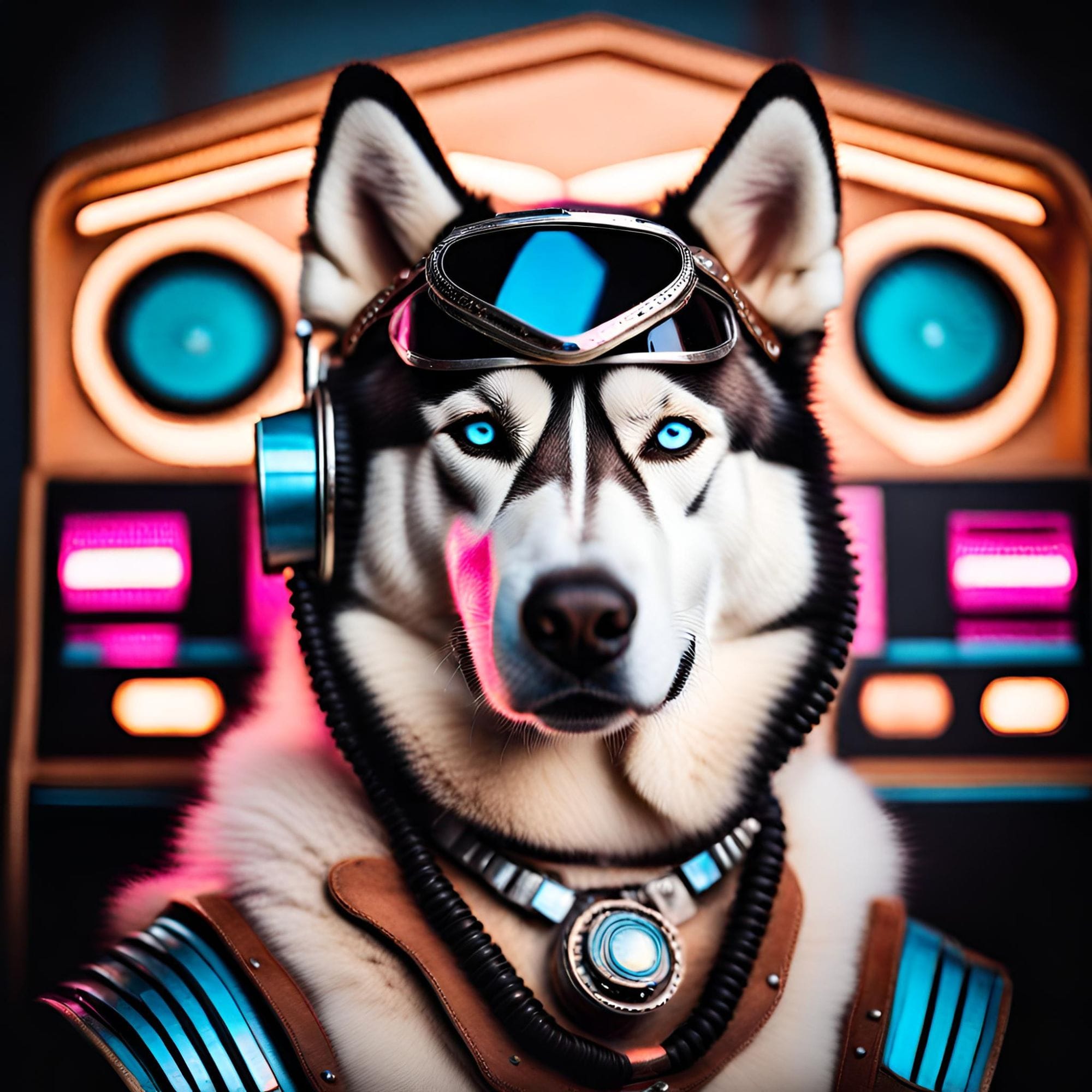The Western Husky: Unraveling the Russian Connection and Controversies









buymeacoffee.com coming soon..
Introduction
Huskies are undeniably one of the most fascinating dog breeds, with their striking appearance and captivating personalities. These magnificent creatures have been an integral part of Western culture for many years, captivating the hearts of dog enthusiasts and adventurers alike. However, what many people may not realize is that the history of huskies is deeply intertwined with their Russian origins. In this article, we will delve into the rich heritage of huskies, exploring their journey from being a Western dog to the influence of Russian breeding. We will also address the controversies and misconceptions surrounding this breed, shedding light on the ethical considerations involved in husky breeding. By the end, it will become clear that huskies are not just any ordinary breed, but a unique and cherished part of our shared cultural heritage.
Huskies in Western Culture
Huskies have become an integral part of Western culture, captivating the hearts of dog lovers everywhere with their stunning looks and remarkable abilities. In this section, we will delve into the origin and history of huskies, explore the most popular breeds, and examine the distinctive traits and characteristics that make these dogs so beloved.
Origin and History
The roots of the husky can be traced back to the Arctic regions of North America, where indigenous peoples relied on these sturdy dogs to assist with transportation and hunting. The Inuit people, in particular, developed a deep bond with huskies, valuing their endurance, strength, and loyalty.
Popular Breeds of Huskies
Today, there are several popular breeds of huskies that have captured the imagination of Western dog enthusiasts. The Siberian Husky, known for its striking blue or multicolored eyes, has gained widespread recognition for its sleek appearance and impressive sledding abilities. Another well-known breed is the Alaskan Malamute, which possesses incredible strength and is often used for pulling heavy loads over long distances.
Husky Traits and Characteristics
Huskies exhibit a unique set of traits and characteristics that set them apart from other dog breeds. Their thick double coat provides insulation against harsh weather conditions, allowing them to thrive in cold climates. Additionally, huskies possess an innate sense of independence, intelligence, and a strong pack mentality, making them well-suited for various tasks and activities.
Their friendly and sociable nature makes them excellent companions, both for individuals and families. They are known for their playful and energetic temperament, often engaging in activities that challenge their physical and mental capabilities. Huskies are highly adaptable and can adjust to different living environments, although they thrive best in spacious areas where they can freely roam and explore.
These traits, combined with their striking appearance, have made huskies a highly sought-after breed in Western culture. Their popularity has soared in recent years, with many people admiring not only their physical beauty but also their remarkable working abilities.
The Russian Connection
Russian Influence on Husky Breeding
Huskies, with their striking appearance and remarkable endurance, have captivated the hearts of dog lovers around the world. However, what many may not know is that these magnificent creatures owe a significant part of their breeding history to Russia. The Russian connection has played a vital role in shaping the husky breed as we know it today.
Russian breeders have made significant contributions to the development and refinement of huskies. It was in Russia, particularly in the regions of Siberia, that the breed flourished and evolved over centuries. The harsh and unforgiving climate of Siberia served as the breeding ground for these hardy dogs, as they were extensively utilized by indigenous people for various tasks, such as transportation and companionship.
Siberian Huskies vs. Alaskan Malamutes
While Siberian Huskies and Alaskan Malamutes share similarities in appearance, they are distinct breeds with separate origins. Siberian Huskies, as the name suggests, were primarily bred in Siberia, Russia, whereas Alaskan Malamutes trace their roots to the Inuit tribes of Alaska. Despite the similarities in their working abilities and sled-pulling prowess, the two breeds have distinct characteristics.
Siberian Huskies are known for their moderate size, agility, and speed. They possess a friendly and outgoing temperament, making them excellent family pets. Alaskan Malamutes, on the other hand, are larger and stronger, with an emphasis on power rather than speed. They are renowned for their loyalty, strength, and endurance, traits that make them ideal working dogs in harsh Arctic conditions.
Huskies in Russian Culture
In addition to their contributions to husky breeding, Russians have a deep cultural connection with these magnificent dogs. In Russian folklore, huskies are often depicted as loyal companions and guardians. Stories and legends abound, showcasing the bravery, intelligence, and unwavering loyalty of these remarkable animals.
Furthermore, huskies have played a significant role in Russian history. During the era of exploration and conquest, Russian explorers relied heavily on huskies to navigate the treacherous terrains of the Arctic. These dogs proved instrumental in crucial expeditions, enabling explorers to reach remote areas that would have otherwise been inaccessible.
Today, huskies continue to hold a special place in Russian culture. They are celebrated in festivals, exhibitions, and even in the form of statues and monuments in various Russian cities. Their enduring presence serves as a testament to the rich heritage and deep appreciation that Russians have for these remarkable dogs.
The Russian connection has undoubtedly left an indelible mark on the husky breed. From their origins in Siberia to their cultural significance in Russian society, these dogs have become an integral part of the Russian narrative. As we explore the controversies and misconceptions surrounding huskies, it is essential to appreciate the influence that Russia has had on their development and the enduring bond between huskies and their Russian counterparts.
Controversies Surrounding Huskies
Misconceptions and Stereotypes
Huskies, with their captivating appearance and unique traits, have gained a significant amount of attention in popular culture. However, along with this fame, numerous misconceptions and stereotypes have emerged. One common misconception is that all Huskies are escape artists and cannot be trusted off-leash. While it is true that Huskies have a strong instinct to roam and explore, proper training and socialization can help mitigate this behavior.
Another prevalent stereotype is that Huskies are aggressive or dangerous dogs. This is a gross generalization and does not accurately reflect the breed as a whole. Like any other dog, Huskies can display aggression if not properly trained or socialized. However, with the right guidance and care, Huskies can be friendly, loyal, and gentle companions.
Ethical Considerations in Husky Breeding
The growing popularity of Huskies has unfortunately led to unethical breeding practices in some cases. Irresponsible breeders, also known as backyard breeders, prioritize profit over the well-being of the dogs. This has resulted in an increase in health issues and genetic disorders within the Husky population.
Ethical breeding aims to produce healthy and well-tempered Huskies by prioritizing the health and temperament of the parent dogs. Reputable breeders conduct health screenings and genetic testing to ensure the breeding stock is free from hereditary diseases. They also prioritize finding suitable homes for their puppies, educating potential owners about the breed's specific needs and requirements.
Huskies as Working Dogs
Huskies have a rich history as working dogs, particularly in colder climates. They have been used for various tasks, such as pulling sleds, herding reindeer, and even search and rescue operations. However, the rise in popularity of Huskies as pets has led to a decrease in their working roles.
While many Huskies today enjoy a life of companionship and leisure, it is essential to remember that they still possess the instinct and energy to work. It is crucial for Husky owners to provide them with appropriate mental and physical stimulation. Regular exercise, interactive toys, and engaging activities can help satisfy their natural instincts and prevent behavioral issues that may arise from boredom or under-stimulation.
In conclusion, the controversies surrounding Huskies primarily stem from misconceptions, stereotypes, unethical breeding practices, and the shift in their role from working dogs to family pets. By educating ourselves about the breed's specific needs, promoting ethical breeding, and providing them with the necessary stimulation, we can ensure that Huskies continue to be cherished companions while respecting their natural instincts and heritage.
Conclusion
In conclusion, huskies have undeniably become an integral part of Western culture, captivating the hearts of dog lovers everywhere. These magnificent creatures have a rich history and a unique set of traits that make them truly special.
Originating from the Western regions, huskies have gained immense popularity over the years. Their striking appearance, unmatched endurance, and friendly temperament have made them beloved pets and companions. From the iconic Siberian Husky to the powerful Alaskan Malamute, these breeds have become symbols of adventure, loyalty, and resilience.
However, it is important to acknowledge the Russian connection when discussing huskies. Russian influence on husky breeding cannot be ignored, as it has played a significant role in shaping the breed as we know it today. The importation of Siberian Huskies from Russia has contributed to the diversity and genetic strength of the breed.
While huskies are often associated with Russia, it is crucial to distinguish between Siberian Huskies and Alaskan Malamutes. These two breeds may share some similarities, but they have distinct characteristics and purposes. Siberian Huskies are renowned for their speed and agility, while Alaskan Malamutes excel in strength and endurance.
In Russian culture, huskies hold a special place as working dogs, assisting with transportation and sledding in the harsh Arctic conditions. Their ability to navigate through snow and ice has made them invaluable in these challenging environments.
However, controversies surrounding huskies persist. Misconceptions and stereotypes often lead to misunderstandings about the breed. It is essential to educate ourselves and others about the true nature of huskies, dispelling any myths that may cloud our perception of these magnificent animals.
Furthermore, ethical considerations in husky breeding should be a priority. Responsible breeding practices ensure the health and well-being of the breed, preventing genetic issues and promoting the longevity of these incredible dogs.
Lastly, we must not forget the working aspect of huskies. While many huskies are beloved pets, they are also highly skilled working dogs. Their innate strength, endurance, and intelligence make them ideal for various tasks, such as search and rescue or therapy work.
In conclusion, huskies are not only Western dogs, but they also hold a deep connection to Russian culture. Their influence and impact have transcended borders, capturing the hearts and imaginations of dog lovers worldwide. As we continue to celebrate and appreciate these remarkable animals, let us do so with respect, understanding, and a commitment to their well-being.






Member discussion